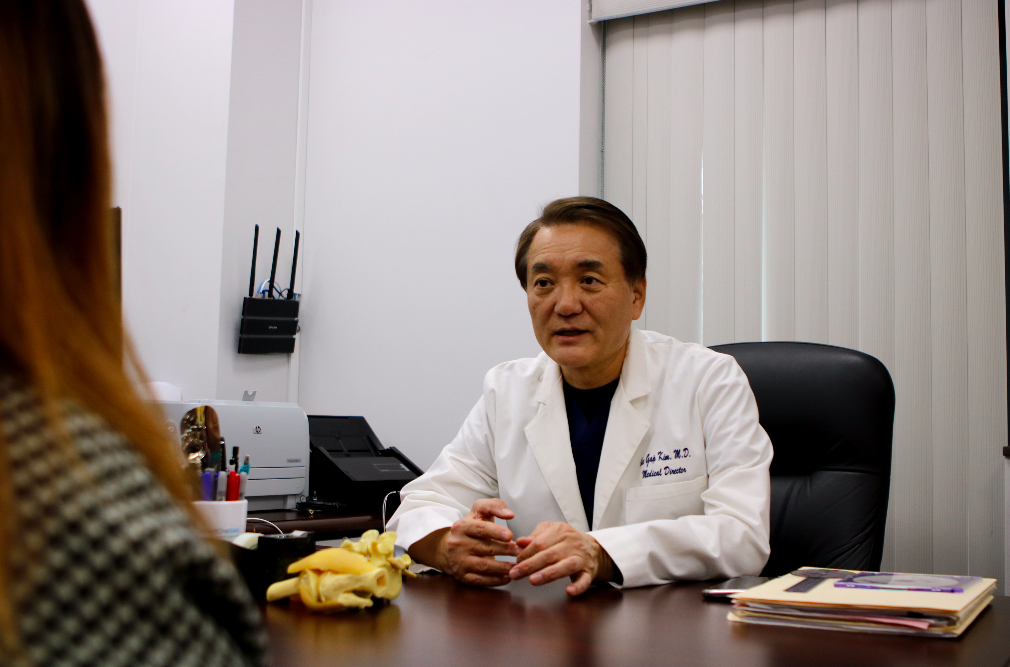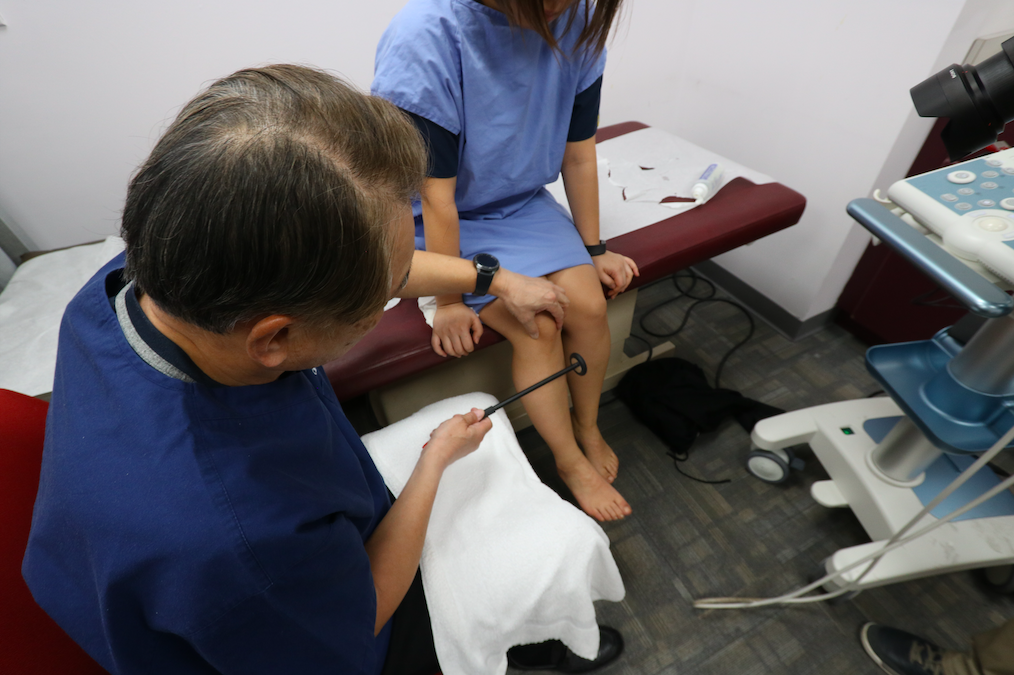Health
Pain-Free New Year

Chronic pain can be overwhelming. Unfortunately, millions of Americans suffer from pain caused by various ailments every year, which affects their life quality and ability to perform daily tasks. Fortunately, you don’t have to suffer from pain every year. You can do some activities to help you lessen the pain and focus more on the things you love.
Here are some things to do to have a pain-free new year.
1. Learn Meditation Techniques
Good meditation techniques, coupled with deep breathing, can help your body relax and ease your pain. This duo loosens the tightness that’s in the muscles and sends them a message to relax. You can engage in various meditation ways, though the common one is by repeating some phrases in your mind. As you repeat those phrases, ensure that you ignore your thoughts and focus on your breathing. Taking a meditation class can also help you grasp meditation techniques well.
Deep breathing is also an excellent companion to meditation. Like meditation, it can help you to relax your muscles. However, to effectively practice this technique, you need to assume a comfortable body position, get a quiet location, and block out destructive thoughts. After doing that, take deep breaths that will fill your abdomen with air, then exhale it out like a deflating balloon.
2. Minimize Stress
Negative feelings such as anxiety, depression, anger, and stress, makes the body more sensitive to pain. Managing your stress can help you find relief from pain. Some techniques to minimize stress and promote relaxation include listening to soothing music and taking a walk. You can also purchase specially designed relaxation CDs or use mental guided imagery to calm your mind. The activities you engage in to minimize stress should relax your muscles and make your mind peaceful.

3. Exercise
Exercise is vital because it stimulates the brain to produce endorphins, which block pain signals and enhance mood. Exercise can also strengthen your muscle and reduce your chances of injury and feeling pain.
If you have diabetes, obesity, or heart disease, exercise can help you mitigate them. However, if you’re diabetic or neuropathic, you need to be careful about the type of exercises you engage in. It’s advisable to consult your doctor and ask him or her the types of physical activities that can fit your body.
4. Join Support Groups
Copying with pain alone can be quite difficult. That’s why most patients suffering from pain are advised to join support groups to meet with other people who’re also experiencing pain. Being in such a group and learning how to cope with pain from others who experience a similar situation can reduce pain.
It would be best to meet with a mental health professional because excruciating pain often leads to depression. If you’re counseled by a professional, you’ll learn how to cope better and avoid negative thoughts that worsen the pain. Having a healthier attitude and asking for help can strengthen you during your journey.
Conclusion
Tolerating pain isn’t easy if you don’t know what to do to lessen it. However, if you know the right activities to engage in, you’ll find coping with pain easier and may even reduce its impact on your life.
Website – https://kimpain.com/
Health
Addressing Common Myths About Vitamins and Supplements by Amanda Tirado

The wellness industry is filled with advice about vitamins and supplements, but not all of it is accurate. Many people rely on supplements for better health, but misunderstandings about how they work can lead to wasted money or even potential harm. Amanda Lorena Tirado, founder of Xmy, is passionate about educating people on making smarter supplement choices. Her company focuses on high-quality, effective products while also giving back to the community through charitable initiatives. Let’s break down some of the most common myths about vitamins and supplements so you can make informed decisions.
One of the biggest myths is that all supplements work the same way, regardless of how they are taken. Many don’t realize that traditional pills and capsules have to pass through the digestive system, where stomach acid and enzymes break them down. This can significantly reduce the amount of nutrients your body actually absorbs.
In contrast, oral strips and liquid supplements enter the bloodstream more quickly, making them more effective. For example, vitamin B12 is often poorly absorbed in pill form but is much more bioavailable in liquid or sublingual forms. Choosing the right delivery method is just as important as picking the right supplement.
Another misconception is that supplements can replace a healthy diet. Many people assume taking a daily multivitamin covers all their nutritional needs, but that’s not how the body works. Supplements are designed to support a good diet, not replace it. Whole foods provide more than just vitamins, they contain fiber, antioxidants, and other compounds that work together to benefit your health.
For example, an orange does not just offer vitamin C. It also provides fiber, flavonoids, and other nutrients that enhance absorption and support overall health. Research has shown that people who get their nutrients from food rather than supplements tend to have better long-term health outcomes. So while supplements can help fill gaps in your diet, they should not be your primary source of nutrients.
Many people also assume that if a supplement is labeled as “natural,” it must be better and safer. But that’s not necessarily true. The term “natural” is often used as a marketing tool rather than an indicator of quality or safety.
Some natural ingredients can be harmful, especially in high doses or when mixed with certain medications. On the flip side, some synthetic nutrients are actually more stable and easier for the body to absorb. The key is to choose well-researched, high-quality supplements from reputable brands rather than relying on misleading labels.
Another dangerous myth is that taking more vitamins means better health. Some believe that if a little is good, a lot must be even better, but that’s not always the case.
Certain vitamins, especially fat-soluble ones like A, D, E, and K, can build up in the body and become toxic if taken in excessive amounts. Too much vitamin A, for example, can lead to liver damage, while excessive vitamin D can cause kidney problems. Even water-soluble vitamins like B-complex and C can cause side effects in very high doses, such as nerve issues or stomach discomfort. Moderation is key when it comes to supplementation.
At Xmy, the focus is not just on convenience, it’s about real impact. The company is committed to producing supplements that prioritize effectiveness and bioavailability. But their mission goes beyond selling products.
Misinformation about supplements is everywhere, but being informed is the best way to make smarter health choices. The way a supplement is absorbed matters as much as what’s in it. A balanced diet is still the foundation of good health, and more vitamins don’t always mean better results.
Xmy is changing the way people think about supplements. Amanda and her team believe that good health is not just about what you take, it’s about making informed choices and supporting brands that genuinely care. Choosing the right supplements means choosing a brand that stands for something bigger. With Xmy, you are not just improving your health, you are supporting a company that is making a real difference.
-

 Tech5 years ago
Tech5 years agoEffuel Reviews (2021) – Effuel ECO OBD2 Saves Fuel, and Reduce Gas Cost? Effuel Customer Reviews
-

 Tech6 years ago
Tech6 years agoBosch Power Tools India Launches ‘Cordless Matlab Bosch’ Campaign to Demonstrate the Power of Cordless
-

 Lifestyle6 years ago
Lifestyle6 years agoCatholic Cases App brings Church’s Moral Teachings to Androids and iPhones
-

 Lifestyle5 years ago
Lifestyle5 years agoEast Side Hype x Billionaire Boys Club. Hottest New Streetwear Releases in Utah.
-

 Tech7 years ago
Tech7 years agoCloud Buyers & Investors to Profit in the Future
-

 Lifestyle5 years ago
Lifestyle5 years agoThe Midas of Cosmetic Dermatology: Dr. Simon Ourian
-

 Health7 years ago
Health7 years agoCBDistillery Review: Is it a scam?
-

 Entertainment6 years ago
Entertainment6 years agoAvengers Endgame now Available on 123Movies for Download & Streaming for Free
